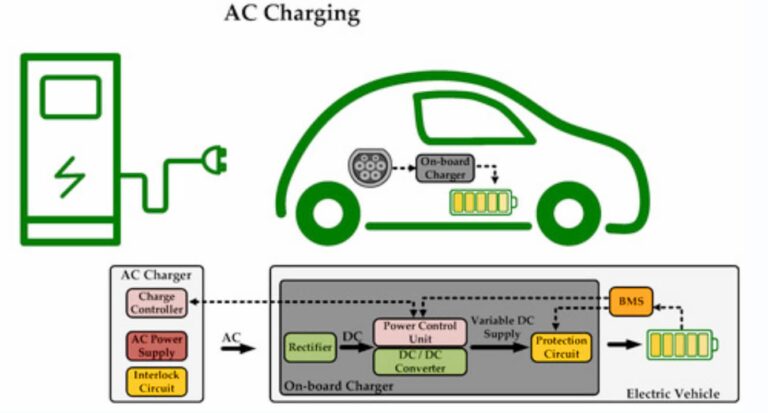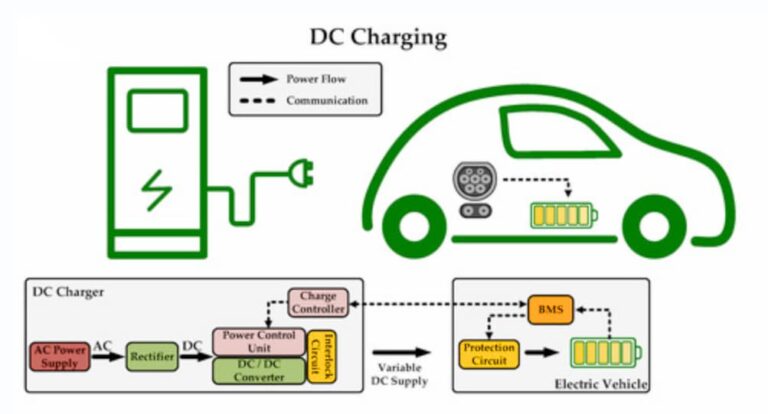Introduction
In an era where electric vehicles (EVs) are rapidly gaining popularity for their environmental and economic benefits, understanding how EV charging stations work is crucial for both current and prospective EV owners. In this comprehensive guide, we will explore the world of EV charging, covering topics from the basics to the intricacies of charging infrastructure.
What Is an EV Charging Station?
In an era where electric vehicles (EVs) are rapidly gaining popularity for their environmental and economic benefits, understanding how EV charging stations work is crucial for both current and prospective EV owners. In this comprehensive guide, we will explore the world of EV charging, covering topics from the basics to the intricacies of charging infrastructure.
How to Charge an EV?
Charging an electric vehicle is a straightforward process, akin to refueling a conventional car. Here’s a step-by-step guide:
Plug In: First, locate the charging port on your EV and the corresponding connector on the charger. Plug the charger into your vehicle.
Connect to a Power Source: Ensure the charger is connected to a power source. At home, this might be a standard electrical outlet (Level 1) or a dedicated charging station (Level 2). In public, you’ll find Level 2 and DC fast chargers at charging stations.
Initiate Charging: Most EVs have a dashboard or app interface that allows you to start and stop charging. Use this interface to initiate the charging process. Refer to the GREENC’s EV charging stations, which allows you set up the charging schedule by what time you want on the app easily, you can power your car during off-peak time, that will be saved your cost directly.
Charging Progress: While your EV is charging, monitor its progress. Many vehicles provide real-time information on your dashboard or through a smartphone app. Charging times vary depending on your charger’s power level and the capacity of your EV’s battery.
Complete Charging: When your EV reaches the desired state of charge or your intended range, stop the charging session. Unplug the charger, and you’re ready to hit the road.
Where to Find EV Charging Stations
EV charging stations are becoming increasingly prevalent, making it convenient for EV owners to charge their vehicles. Here are some common places to find EV charging stations:
At Home: Many EV owners install Level 2 charging stations at home for convenient overnight charging.
Public Charging Stations: Public charging stations are found in various locations, including shopping centers, parking lots, and along highways. Apps and websites often provide maps and information about their locations.
Workplace Charging: Some employers offer workplace charging stations, allowing employees to charge their EVs while at work.
Destination Charging: Hotels, restaurants, and tourist attractions are starting to offer EV charging as a service to attract eco-conscious visitors.
Highways and Rest Areas: Along major highways, you’ll find DC fast charging stations for long-distance travel.
Is EV Charging Safe or Not?
EV charging is generally safe when proper precautions are taken. EVs and their charging stations are designed with safety in mind, incorporating features such as:
Ground Fault Protection: EV chargers have built-in ground fault protection to prevent electrical hazards.
Overcurrent Protection: Charging equipment includes safeguards to prevent overcurrent situations that could damage the vehicle or charger.
Thermal Management: EV batteries are equipped with thermal management systems to maintain safe operating temperatures.
User-Friendly Features: Charging stations are designed to be user-friendly, with secure connectors and clear instructions.
Both of GREENC’s portable EV charger and charger wall box, they are designed with security mechanism, These comprise overload, underload, short-circuit, leakage, lightning and over-voltage protection for enhanced security.
However, it’s essential for EV owners to follow safety guidelines, such as not overloading electrical circuits and avoiding the use of damaged cables or connectors. Regular maintenance and inspections of charging equipment are also crucial for safety.
How Does EV Charging Station Work?

AC (Alternating Current) charging and DC (Direct Current) charging are two fundamental methods used to charge electric vehicles (EVs). They differ in terms of their electrical characteristics, charging equipment, charging speeds, and applications.

How does EV charging station work. there are several steps for process.
Power Supply: The charging station is connected to the power grid, which provides the electricity needed for charging.
Conversion: The electricity from the grid is converted into a form that can be used by the EV’s battery. This conversion typically involves changing alternating current (AC) from the grid into direct current (DC) that the battery can accept.
Charging Connector: The charging station is equipped with a connector that plugs into the EV. The connector provides a secure connection and is designed to prevent accidental disconnection during charging.
Communication: Charging stations and EVs communicate to ensure a safe and efficient charging process. This communication includes verifying the EV’s compatibility with the charger, monitoring the charging session, and enabling data transfer between the EV and the station.
Charging Control: The charging station regulates the flow of electricity to the EV’s battery, adjusting the charging rate as needed. This control helps optimize the charging process for efficiency and safety.
Safety Features: Charging stations are equipped with safety features such as ground fault protection, overcurrent protection, and emergency shut-off mechanisms to ensure user safety.
In summary, EV charging stations work by taking electricity from the grid, converting it into a suitable form, and safely delivering it to the EV’s battery. Communication and safety features ensure a smooth and secure charging experience.
Conclusion
Understanding how EV charging stations work is fundamental for anyone considering electric vehicle ownership. As the world transitions towards cleaner and more sustainable transportation, the efficiency, safety, and accessibility of EV charging infrastructure will continue to improve, making electric vehicles an increasingly attractive option for consumers.
Whether you’re charging at home, at work, or on the road, the convenience and environmental benefits of electric vehicles are clear. By embracing the technology and learning how to charge your EV the smart way, you can contribute to a greener future while enjoying the many advantages of electric mobility.







